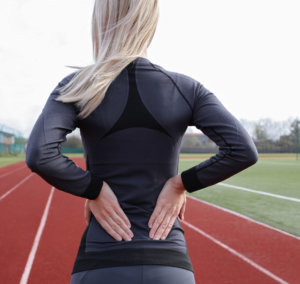In 2018, low back pain was the 3rd most frequent primary care complaint, behind upper respiratory infection and hypertension. 80-90% of adults experience low back pain at least once in their life.
At the Center for Spine Care + Mobility, 60-70% of our patients come in with a chief complaint of low back and middle back pain.
What are the most common causes of low back pain?
- Sprain/ strain of the para-spinal muscles and ligaments
- Degenerative Disc Disease/ Arthritis/ Scoliosis
- Herniated and bulging discs
- Spondylolisthesis
- Spinal stenosis
- Fibromyalgia
- Osteoporosis/ Fracture
How do we know what’s wrong?
 Before a treatment plan is implemented, a thorough clinical assessment is performed. This includes: History of the injury, review of associated symptoms, review of past and present medical history, physical examination including neurological tests and range of motion.
Before a treatment plan is implemented, a thorough clinical assessment is performed. This includes: History of the injury, review of associated symptoms, review of past and present medical history, physical examination including neurological tests and range of motion.
Patients are also screened for ‘red flags’ which are serious pathologies that could be causing their low back pain. Imaging such as x-rays or MRIs may be ordered. If patient has had previous imaging the results are reviewed prior to treatment.
How do we treat low back at CSC+M?
At CSC+M we believe low back pain can be managed using a multidisciplinary approach with a combinations of therapy including:
Chiropractic Treatment of low back pain:
- Performing spinal manipulation to correct alignment and reduce nerve compression
- If suspicious of disc related injury our chiropractors implement Flexion-Distraction Technique to move the disc away from the nerve, reducing inflammation and pain. For more on this technique check out the blog on Flexion-Distraction Technique.
- Actively and passively stretching out muscles utilizing Active Release Technique (ART)
- Using therapeutic ultrasound to deliver heat and energy to muscle and ligaments
- Graston Technique and cupping to promote soft tissue release and healing
- Applying hot or cold therapy to the area of discomfort—check out the previous blog on Hot or Cold Therapy.
Learn more about our NYC chiropractors.
Medical Treatment of low back pain performed by our Nurse Practitioner:
- Treating acute pain relief with medication management such as:
- Non-Steroidal Anti-Inflammatory Drugs (NSAIDS)- Advil, Ibuprofen, Aleve, Meloxicam, Diclofenac oral and topical cream for relief pain and decrease inflammation.
- Muscle relaxants to help decrease muscle tension and hypertonicity.
- Oral Steroids to decrease pain inflammation and reduce radicular symptoms.
- Neuropathic medications to reduce or eliminate radicular symptoms
- Lidoderm patches
- CBD topicals
- Fitting patients for a Lumbar-Sacral brace, to aide with support and stability during an acute exacerbation.
- Providing myofascial pain relief with trigger point injections
- Application of Kinesiology Tape to provide support, lessen pain reduce swelling and improve movement.
- Encouraging modified physical activities and refer to physical therapy
Learn more about our medical practice and services here.
Physical Therapy Treatment of low back pain:
- Use various treatment techniques and protocols to reduce pain, restore proper function and movement, and prevent further disability by strengthening various muscle groups.
Learn more about our physical therapy in NYC.
Acupuncture Treatment of low back pain:
- Use of traditional Chinese medicine to connect meridians (pathways) to stimulate and restore Qi (energy) to the low back, in-turn relieving pain and function.
Learn more about our NYC acupuncture services here.
Low back pain can be stubborn, at CSC+M we believe in providing New Yorkers with the most comprehensive form of rehabilitation. Combining treatment modalities increases your chance for a speedy recovery and decreases your chances for an exacerbation in the future.
